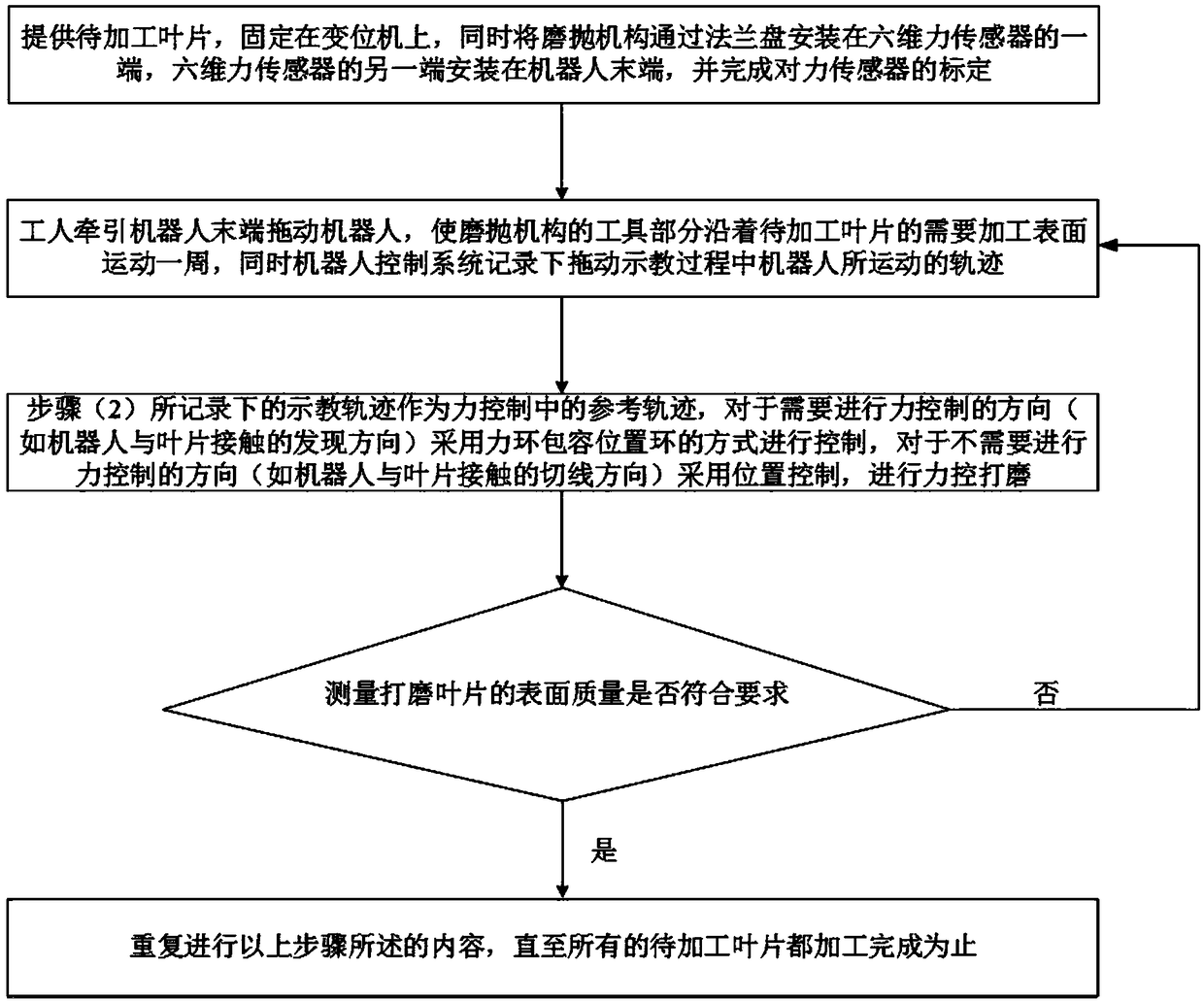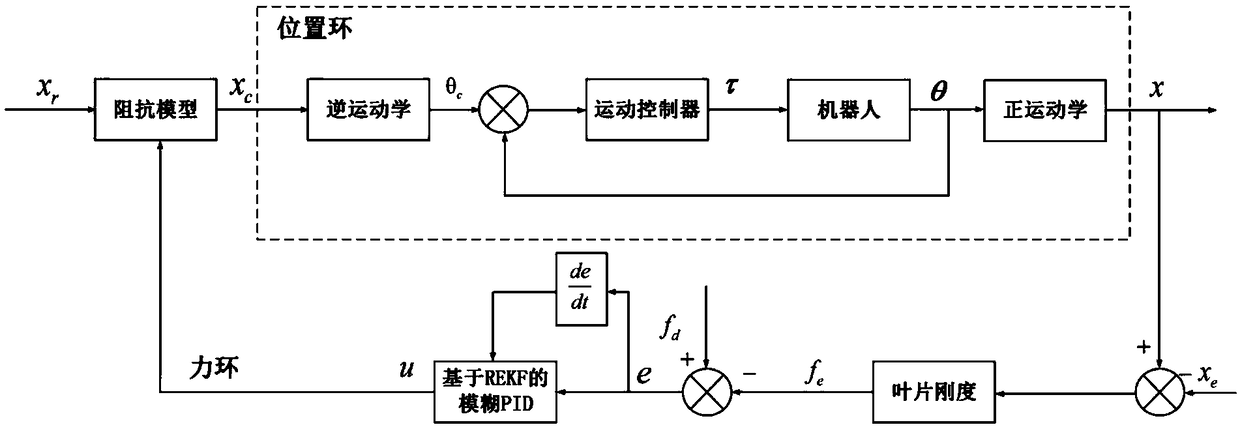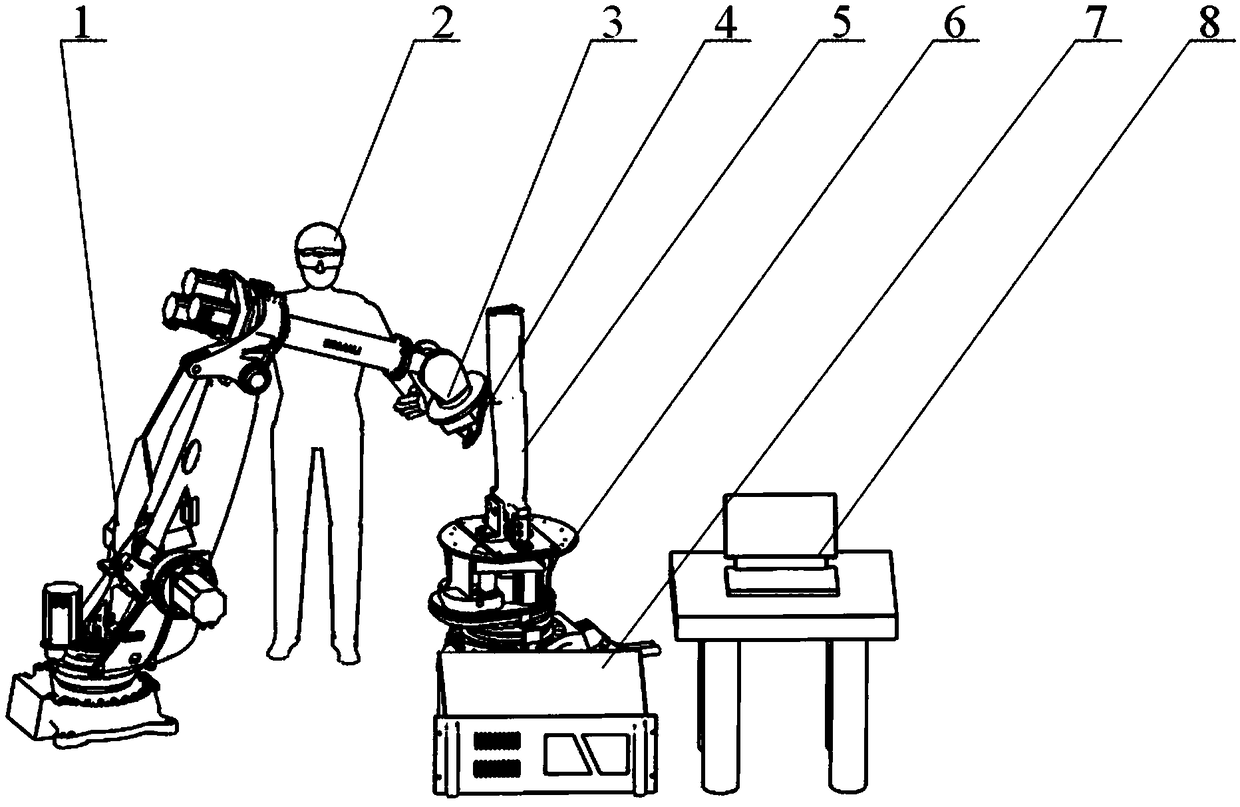Device and method for force controlling polishing blade through dragging teaching robot
A technology of dragging and teaching, robot, applied in the direction of manipulator, program control manipulator, manufacturing tool, etc., can solve the problems of long configuration time and complicated programming, and achieve the effect of reducing skill requirements, high degree of integration, and reducing labor intensity
- Summary
- Abstract
- Description
- Claims
- Application Information
AI Technical Summary
Problems solved by technology
Method used
Image
Examples
Embodiment Construction
[0034] In order to make the object, technical solution and advantages of the present invention clearer, the present invention will be further described in detail below in conjunction with the accompanying drawings and embodiments. It should be understood that the specific embodiments described here are only used to explain the present invention, not to limit the present invention. In addition, the technical features involved in the various embodiments of the present invention described below can be combined with each other as long as they do not constitute a conflict with each other.
[0035] see figure 1 , figure 2 and image 3 , the device provided by the present invention is based on the force-controlled grinding blade of the robot based on the drag teaching. The device applies the drag teaching to the reference trajectory for obtaining force-controlled grinding, and at the same time adopts the control frame of the force ring containing the position ring to ensure The f...
PUM
 Login to View More
Login to View More Abstract
Description
Claims
Application Information
 Login to View More
Login to View More - R&D
- Intellectual Property
- Life Sciences
- Materials
- Tech Scout
- Unparalleled Data Quality
- Higher Quality Content
- 60% Fewer Hallucinations
Browse by: Latest US Patents, China's latest patents, Technical Efficacy Thesaurus, Application Domain, Technology Topic, Popular Technical Reports.
© 2025 PatSnap. All rights reserved.Legal|Privacy policy|Modern Slavery Act Transparency Statement|Sitemap|About US| Contact US: help@patsnap.com



